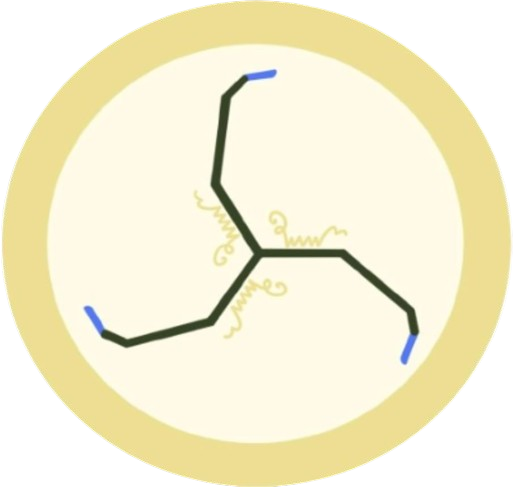Green chemistry is all about creating smarter, safer ways to produce the things we use every day. Instead of relying on harmful chemicals or processes that damage the environment, green chemistry focuses on developing solutions that are kind to the planet. Whether it’s reducing waste, using renewable energy, or crafting materials that break down naturally, green chemistry plays a crucial role in building a cleaner future.
Innovations
A key innovation in waste reduction is enzyme-based recycling. Scientists have created special enzymes that can break down plastics like polyethylene terephthalate (PET) into basic components. For example, the enzyme PETase can effectively degrade PET, which is commonly used in bottles and packaging. This technology allows us to recycle plastics that were previously hard to process, reducing landfill waste and supporting a circular economy.
Another important development is the use of green catalysts. Unlike traditional catalysts, which can be toxic and produce harmful by-products, green catalysts are designed to be environmentally friendly. For instance, researchers have developed reusable metal-organic frameworks (MOFs) that serve as efficient catalysts in various chemical reactions. These MOFs can be used many times without losing their effectiveness.
Renewable energy resources
Renewable energy resources are sources of energy that are naturally replenished and have a lower environmental impact compared to fossil fuels.
- Solar energy — Solar panels capture sunlight and turn it into electricity using photovoltaic cells. This electricity can power homes, businesses, or be stored in batteries.
- Wind energy — Wind turbines use the wind to spin blades connected to a generator, producing electricity that can be used locally or added to the power grid.
- Hydroelectric power — Flowing water drives turbines, which generate electricity. The amount of power depends on the water’s flow rate and height.
- Geothermal energy — Heat from the Earth’s core creates steam that drives turbines to produce electricity.
- Biogas — Organic materials like plant waste or manure are burned or processed to create heat or electricity, and can also be turned into biofuels like ethanol.
Biodegradable materials
Biodegradable materials are designed to break down naturally and safely in the environment over time.
- Biodegradable Plastics — Made from plant-based materials, these plastics break down naturally into harmless substances over time, unlike conventional plastics that can last for centuries.
- Compostable Cutlery — Cutlery made from biodegradable materials like cornstarch or sugarcane that decomposes in composting conditions, reducing landfill waste.
- Natural fibres — fibres from plants or animals, such as cotton or wool, that decompose more quickly and safely than synthetic fibres, helping to lessen environmental impact.
Catalysis and Atom Economy
Catalysis in Green Chemistry — Catalysis involves using substances, known as catalysts, to speed up chemical reactions without being consumed in the process. In green chemistry, catalysts are crucial because they can make reactions more efficient and less harmful. Green catalysts are designed to be non-toxic, reusable, and to produce fewer by-products, which helps reduce environmental impact. For example, catalysts can be used to speed up reactions at lower temperatures, saving energy and reducing the need for hazardous chemicals.
Atom Economy — Atom economy is a principle that focuses on maximising the use of all the atoms in a chemical reaction, minimising waste. The goal is to design reactions where the reactants are fully converted into useful products, rather than producing large amounts of by-products. High atom economy means that most of the materials used in the reaction end up in the final product, making the process more efficient and reducing waste.
Example
Hydrogenation: Catalysts like platinum add hydrogen to fats, making the process more efficient and allowing the catalyst to be reused.
Green chemistry is making a big difference by finding smarter ways to cut down on waste and pollution. With better recycling methods, renewable energy, and biodegradable materials, we’re moving towards a cleaner and more efficient future.
-Suhani Kashyap
Sources:
- https://www.acs.org/greenchemistry/principles/12-principles-of-green-chemistry.html
- https://www.epa.gov/greenchemistry
- https://www.nature.com/articles/s41598-023-37227-5
- https://www.investopedia.com/terms/r/renewable_resource.asp
- https://greenchemuoft.wordpress.com/2014/04/04/greenchemprinciple2/
Glossary
- Sustainable — Sustainability consists of fulfilling the needs of current generations without compromising the needs of future generations,
- Eco-friendly — not harmful to the environment.
- Enzyme — a substance produced by a living organism which acts as a catalyst to bring about a specific biochemical reaction.
- Non — toxic — not poisonous or toxic.
- Hazardous — dangerous
*Disclaimer: This article has also been posted to our Medium. NernstNaK is the rightful owner of this work on both our website and Medium, and thus stresses that there has been no plagiarism or copying on either account.*

